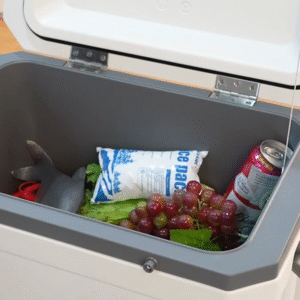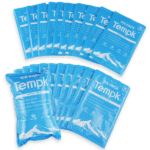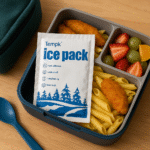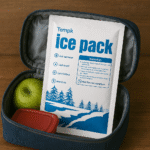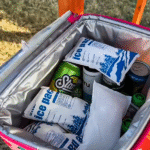Shipping perishable goods, especially under quarantine conditions, requires precise temperature control to preserve the integrity of the products. Quarantine dry ice packs are essential for ensuring that items like pharmaceuticals, vaccines, and biotech samples remain intact during transportation. In this article, we’ll explore how quarantine dry ice packs work, their advantages, and best practices for integrating them into your cold chain logistics.
-
What are quarantine dry ice packs and how do they work?
-
What industries benefit most from quarantine dry ice packs?
-
How do quarantine dry ice packs compare to other cooling methods?
-
Best practices for safe handling and packaging with dry ice.
What Are Quarantine Dry Ice Packs and How Do They Work?
Quarantine dry ice packs are specialized cooling solutions that provide a continuous low-temperature environment by sublimating from solid to gas at -78.5°C. They are used for transporting goods that need to be kept frozen, such as vaccines, biotech samples, and frozen foods.
Dry ice’s sublimation process ensures that it doesn’t leave liquid residue behind, making it ideal for high-value shipments where any moisture could damage the goods. Dry ice pack sheets are versatile, adapting to various packaging solutions, and they are commonly used in international and domestic cold chain logistics.
Benefits of Using Quarantine Dry Ice Packs
-
Reliable and Consistent Cooling: Dry ice packs offer stable cooling over long distances without melting and causing water damage.
-
Long-lasting Effectiveness: Dry ice maintains low temperatures for 24-72 hours, reducing spoilage during extended shipping times.
-
Flexible Packaging Options: Dry ice pack sheets can conform to various shapes, making them ideal for diverse shipping needs.
-
Cost-Effective: Despite the higher upfront cost, dry ice’s longevity and cooling power reduce spoilage, saving money in the long run.
How Do Quarantine Dry Ice Packs Compare to Other Cooling Methods?
When considering alternative cooling solutions like gel packs, phase change materials (PCMs), and liquid nitrogen, dry ice stands out for extreme temperature requirements.
| Cooling Method | Temperature Range | Best for Long-Term Shipments | Effectiveness for Frozen Goods |
|---|---|---|---|
| Dry Ice | -78.5°C | Ideal for long-duration, high-value shipments | Excellent for frozen goods |
| Gel Packs | 0°C to -20°C | Short-term use in moderate conditions | Not effective for freezing |
| PCMs | Varies | Specific temperature ranges | Limited for ultra-low temps |
| Liquid Nitrogen | -196°C | Extremely cold but complex to handle | Riskier and harder to manage |
Dry ice is the superior option for transporting frozen products for long durations, especially when compared to gel packs or PCMs.
How Quarantine Dry Ice Packs Improve Cold Chain Logistics
Efficient cold chain management is critical to ensuring safe transport. Dry ice offers the following advantages:
Regulatory Compliance
Quarantine dry ice packs help maintain compliance with industry regulations, such as those set by the FDA, IATA, and DOT. These regulations require reliable temperature monitoring and control during shipping.
Enhanced Product Integrity
For sensitive items like biotech samples and vaccines, dry ice ensures that the products stay within the required temperature range, preserving their quality and efficacy.
Improved Customer Satisfaction
Shipping products that arrive on time and intact increases customer satisfaction. Dry ice helps prevent spoilage and ensures safe, timely delivery.
Best Practices for Using Quarantine Dry Ice Packs
1. Calculate the Correct Amount of Dry Ice
Ensure that the correct quantity of dry ice is used based on the shipment duration, product type, and packing conditions. Typically, 1-2 pounds of dry ice per 24 hours of transit is recommended.
2. Proper Packaging and Ventilation
Always place dry ice at the bottom of the packaging to ensure cold air sinks. Also, leave space for CO₂ gas to escape to prevent pressure buildup.
3. Use Real-Time Temperature Monitoring
Incorporating IoT sensors and temperature loggers into your shipping solution ensures you can track the temperature throughout the journey and address any issues promptly.
Latest Trends in Quarantine Dry Ice Shipping
Innovations in Dry Ice Packaging
-
Smart Packaging: Real-time monitoring of temperature and humidity ensures optimal conditions during transit.
-
Sustainability: Advances in eco-friendly packaging materials reduce the environmental impact of dry ice.
Rising Demand in the Biotech and Pharmaceutical Sectors
As industries like biotech and pharmaceuticals expand, the demand for dry ice in transporting temperature-sensitive products continues to grow. The rise in mRNA vaccines has particularly driven this demand.
Frequently Asked Questions
Q1: How long does dry ice last during shipping?
Dry ice typically lasts 24-72 hours depending on factors like packaging, insulation, and external temperatures. Always calculate the necessary quantity for your shipment.
Q2: Is dry ice safe for shipping?
Yes, dry ice is safe for shipping as long as it is handled and packed correctly. Ensure proper ventilation and labeling to comply with regulations.
Q3: Can dry ice be used for shipping food?
Yes, dry ice is widely used to ship frozen food and seafood, maintaining their quality during transit.
Conclusion and Recommendations
Quarantine dry ice packs are essential for ensuring the safe transport of temperature-sensitive goods. They provide a reliable, long-lasting, and cost-effective solution for shipping products like pharmaceuticals, biotech samples, and seafood. By integrating dry ice into your shipping processes, you can reduce spoilage, improve customer satisfaction, and stay compliant with regulations.
Ready to optimize your cold chain logistics? Contact Tempk today to learn more about how our dry ice solutions can help ensure the safe transport of your products.






